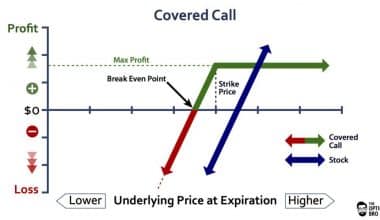Today, organizations constantly seek ways to stand out and gain an edge over their rivals. One concept that plays a crucial role in achieving this is a competitive advantage. Moreover, understanding and harnessing competitive advantages is of utmost importance for organizations, as it can determine their success or failure. You might be wondering what a competitive advantage is. Well, we’ve got you covered, as this article explains competitive advantage, explores its types, and highlights its sources, examples, and importance in today’s business environment. So, continue reading to get more information!
What Is A Competitive Advantage?
A competitive advantage is a unique attribute that sets a business apart from its competitors and allows it to outperform them in the marketplace. It is a characteristic, skill, or resource that gives a company an edge in cost, product differentiation, or superior customer service. Meanwhile, the advantage is achievable through various means. This includes technological advancements, innovative business strategies, efficient production processes, and a strong brand reputation.
Having a competitive advantage is crucial for business success, as it helps attract customers, increase market share, and generate higher profits. A business with a strong attribute can stand out in a crowded market and offer something other businesses cannot easily replicate or match. Hence, this creates a barrier for potential competitors and allows the company to command higher prices or gain a larger market share. Ultimately, a competitive advantage enables a business to establish its position as a leader in the industry and build sustainable long-term success.
Types Of Competitive Advantage
Most companies use several types of competitive advantages to establish themselves as industry leaders. However, below are five common types:
#1. Cost Leadership
This competitive gain is achievable when a company can produce goods or deliver services at lower costs than its competitors. By minimizing costs through efficient processes, economies of scale, or strategic sourcing, businesses can offer similar value to customers at more affordable prices, attracting a larger customer base.
#2. Differentiation
Differentiation advantage focuses on offering unique and distinctive products or services perceived as superior by customers. Companies do this by emphasizing qualities such as innovation, design, quality, or features. Then, resulting in higher customer loyalty and willingness to pay premium prices.
#3. Focus
A focused competitive advantage is achieved by targeting a specific customer segment, market niche, or geographic area. Moreover, businesses can create a competitive edge. That means tailoring products, services, and marketing efforts to meet the needs and preferences of a well-defined market segment. However, this approach allows businesses to become experts in their chosen market and build deep customer relationships.
#4. Innovation
Innovation-driven advantage entails developing and commercializing new products, technologies, or processes that disrupt the market or solve customer problems in a novel way. So, by staying ahead in research and development, businesses can continuously introduce cutting-edge solutions that attract customers and deter competition.
#5. Operational Excellence
Operational excellence encompasses optimizing internal processes, streamlining supply chains, and maximizing efficiency in all business operations. By eliminating waste, reducing costs, and improving productivity, businesses achieve higher profitability and deliver products or services more effectively to customers.
Note that, while these types of competitive advantages can be effective individually, businesses often combine multiple strategies to strengthen their market position. Additionally, competitive advantages must be sustainable and continually changing market dynamics to remain relevant and effective.
Sources Of Competitive Advantage
Here are some sources of competitive advantage:
#1. Cost Structure
The cost structure represents the expenses incurred by a company to produce and deliver its products or services. Achieving a low-cost structure can provide a competitive advantage by allowing a company to offer lower prices to customers while maintaining profitability. Meanwhile, companies can achieve cost advantages through various means, such as economies of scale, efficient production processes, outsourcing, or leveraging technology to reduce operational expenses.
#2. Branding
A strong and well-recognized brand can significantly contribute to a company’s competitive advantage. A brand represents the perceived value and reputation of a product or service in the minds of consumers. By developing a solid brand image built on trust, quality, and innovation, companies can differentiate themselves from competitors and attract customers. Also, a strong brand fosters customer loyalty and enables companies to charge premium prices. This leads to enhanced profitability and market share.
#3. The Quality Of Product Offerings
Product quality plays a vital role in establishing a competitive advantage. Offering products that consistently meet or exceed customer expectations can help differentiate a company from rivals. So, by providing superior quality, companies can build customer trust, loyalty, and a positive brand image. Moreover, high-quality products are often associated with reliability, performance, durability, and functionality, which can attract customers and increase market share.
#4. The Distribution Network
An efficient and well-developed distribution network can be a valuable source of competitive advantage. Companies with a wide and reliable distribution network can reach customers promptly, ensuring that products are available when and where consumers need them. By optimizing their distribution channels, companies can reduce costs, enhance customer satisfaction, and gain a competitive edge. However, effective distribution networks can include various channels such as retail partners, e-commerce platforms, wholesalers, distributors, or direct sales teams.
#5. Customer Service
Providing excellent customer service is a critical differentiator in today’s business landscape. Moreover, companies that prioritize customer satisfaction and go above and beyond to address their needs can gain a competitive advantage. Exceptional customer service strengthens brand loyalty, increases customer retention, and generates positive word-of-mouth, which can lead to new customers. Therefore, investing in employee training, efficient complaint resolution processes, personalized communication, and after-sales support are effective strategies for enhancing customer service and gaining a competitive edge.
Competitive Advantage Examples
Among the examples of competitive advantage is superior technology. Companies that invest in research and development and stay on the cutting edge of technology can often outperform their competitors. Meanwhile, they offer innovative products or services that meet customers’ demands. For instance, Apple is known for its competitive excellence in technology, with its range of smartphones, tablets, and computers known for its sleek designs and advanced features.
Another example of a competitive advantage is a strong brand reputation. Companies with a positive brand image and a loyal customer base can command higher prices for their products or services. For instance, Coca-Cola has a strong brand reputation and is known for its quality and taste. Meanwhile, this reputation allows Coca-Cola to charge a premium for its products, giving it a competitive advantage over other beverage companies. Additionally, a strong brand reputation also leads to customer loyalty, resulting in repeat purchases and a higher market share.
Importance Of Competitive Advantage
The importance of competitive advantage includes:
#1. Differentiation
First, a competitive advantage allows a company to differentiate itself from its competitors. This is achievable through superior product or service quality, innovative features, unique branding, or exceptional customer service. By standing out from the crowd, businesses can attract more customers and retain them in the long term.
#2. Market Leadership
Companies that possess a competitive advantage become market leaders in their respective industries. They can set the pace for innovation, trends, and industry standards. So, being a market leader offers higher market share, increased profitability, and greater bargaining power with suppliers and distributors.
#3. Higher Profitability
A competitive advantage enables a company to charge premium prices for its products or services. When customers perceive a business as offering superior value, they are often willing to pay more. This allows companies to achieve higher profit margins and generate greater financial returns. Additionally, the advantage can also reduce costs through operational efficiencies or economies of scale.
#4. Sustainable Growth
Maintaining a competitive advantage is vital for sustaining long-term growth. By continuously staying ahead of competitors, a company can capture a larger market share and expand its customer base. Hence, this growth provides opportunities for economies of scale, increased brand recognition, and greater market presence.
#5. Customer Loyalty
Competitive advantage enhances customer loyalty and trust. When customers recognize the unique value provided by a company’s products or services, they are more likely to form long-lasting relationships. Additionally, satisfied and loyal customers not only purchase but also become brand advocates, recommending the company to others and contributing to its growth.
#6. Adaptability
Competitive advantage encourages businesses to adapt to changing market conditions and customer preferences. Organizations with a competitive advantage are more agile, responsive, and better equipped to innovate and meet evolving customer needs. This adaptability is essential for staying relevant and competitive in a dynamic business environment.
Overall, competitive advantage is of utmost importance for organizations seeking long-term success. It helps businesses differentiate themselves, achieve market leadership, increase profitability, sustain growth, foster customer loyalty, and stay adaptable in an ever-changing marketplace. Therefore, developing and nurturing a competitive advantage should be a top priority for businesses in the modern business landscape.
What Is A Competitive Advantage In Business?
A competitive business advantage refers to the unique qualities or capabilities that set a company apart from its competitors and gives it an edge in the market. This is why customers choose one company over others in the same industry.
What Are The 4 Elements Of Competitive Advantage?
The four elements of competitive advantage include cost leadership, differentiation, focus, and sustainable competitive advantage. Companies that can strategically leverage these elements can position themselves as market leaders and achieve long-term success.
Is Competitive Advantage A Business Strategy?
Competitive advantage can indeed be a business strategy. Moreover, it is one of the fundamental concepts in strategic management.
How Do You Gain Competitive Advantage?
There are various strategies and approaches to gain a competitive edge. One of the most common ways is through product differentiation. By offering unique and innovative products or services that meet the needs and desires of the target market better than competitors, you can stand out and attract more customers. However, this involves research and development, continuously improving the product, and staying ahead of market trends.
Another strategy is cost leadership. By reducing production costs and increasing efficiency, you can offer their products or services at a lower price than competitors. This can attract price-conscious customers and create a larger market share. Hence, cost leadership can be through outsourcing, implementing lean manufacturing processes, and negotiating better deals.
Additionally, you can adopt a customer-centric approach. Focusing on delivering exceptional customer service and building strong relationships with customers can help you create loyal customer bases who will choose your brand over others. Hence, this can be through personalized marketing strategies, implementing effective CRM systems, and providing ongoing customer support and assistance.
How Does Competitive Advantage Lead To Success?
Having a competitive advantage enables a company to attract more customers, increase market share, and ultimately achieve higher profits. For instance, a company that offers products or services at a lower cost than its competitors can attract price-conscious consumers and gain a larger customer base. On the other hand, a company that differentiates itself by providing unique and high-quality products or services can appeal to a target market and command higher prices.
What Is The Significance Of Competitive Advantage?
The significance of competitive advantage lies in its ability to create and sustain long-term success in a highly competitive market.
Final Thoughts
A competitive advantage serves as the foundation for success in the business world. It allows companies to differentiate themselves, build customer loyalty, and achieve sustainable growth. Therefore, the above types, sources, and examples of competitive advantage can help your business position as the industry leader and stay ahead of the competition.






